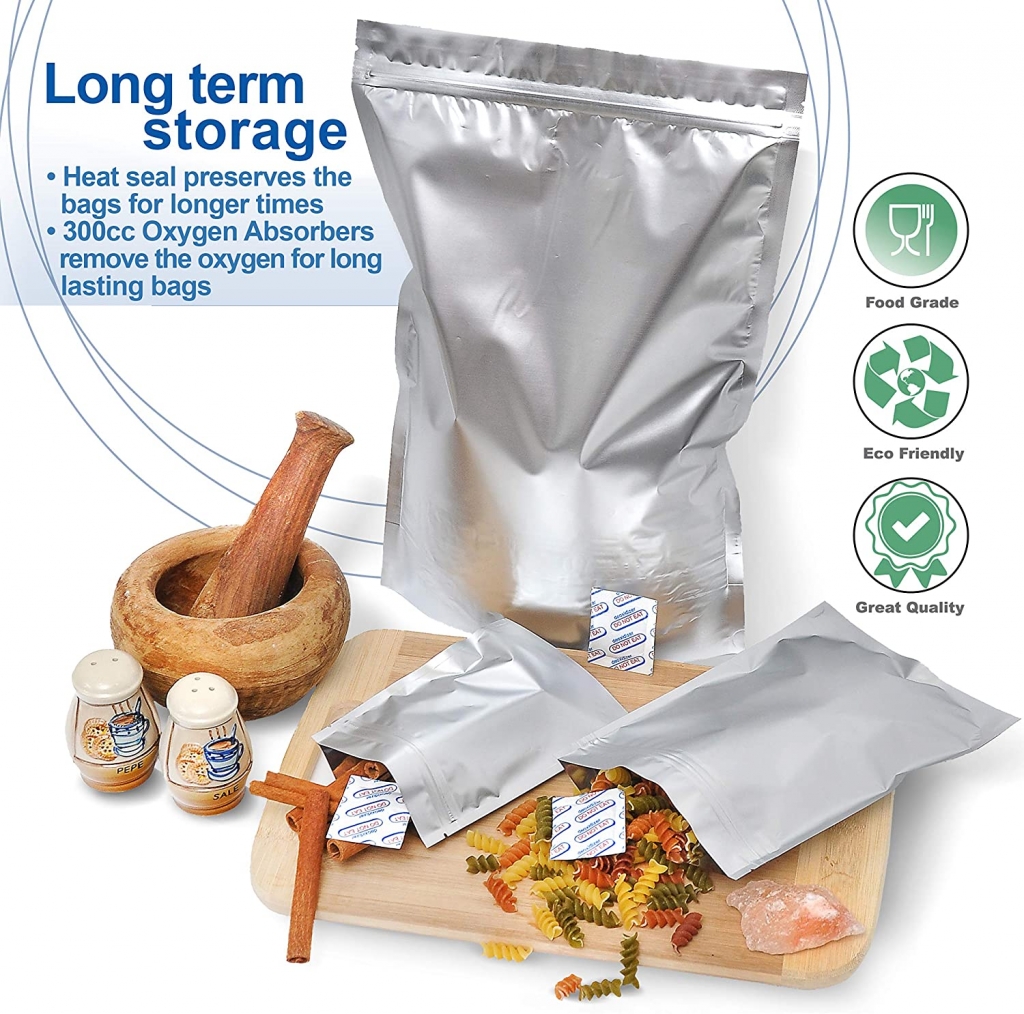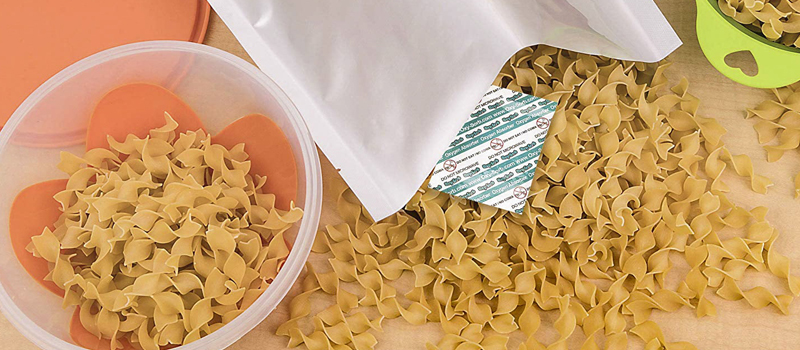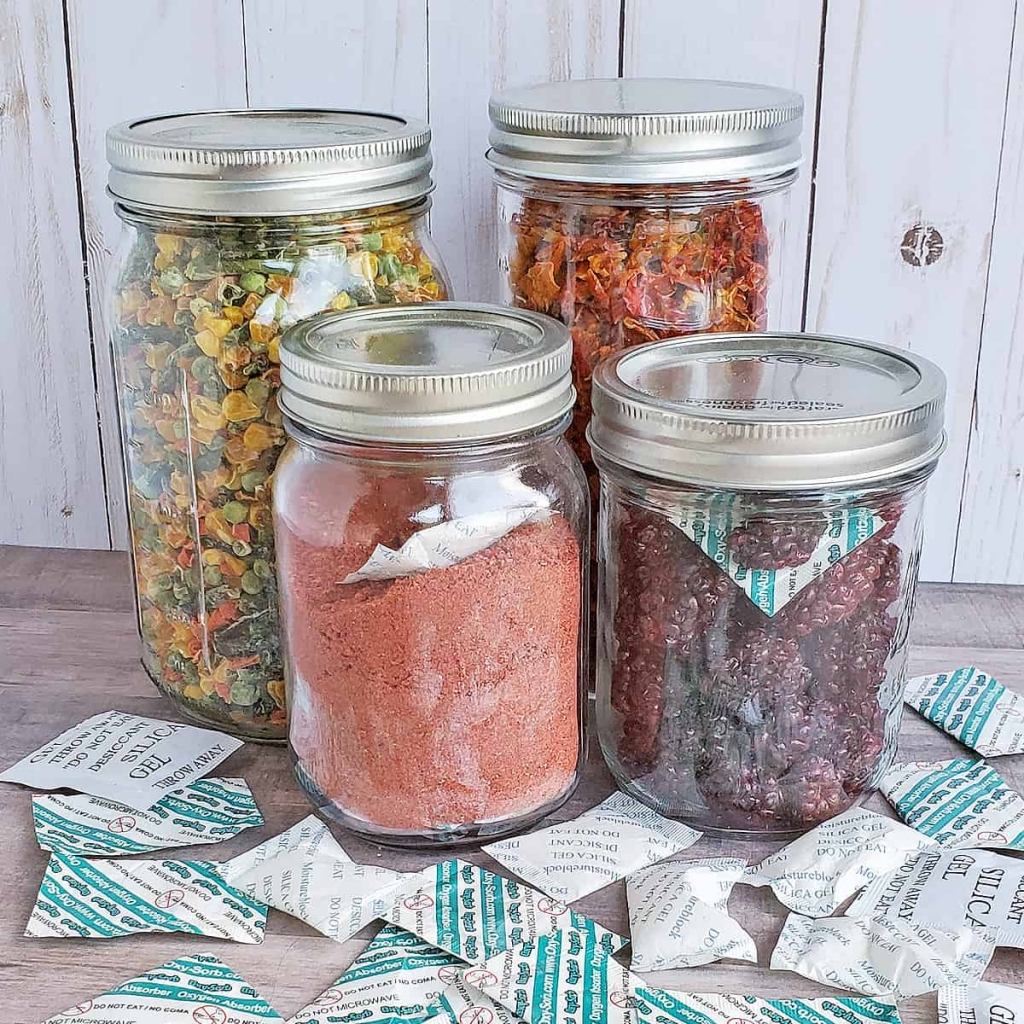For Any Long Term Sealed Package Storage of Edible Goods
 All of the following will work for Oxygen Absorption:
All of the following will work for Oxygen Absorption:
- Mylar Bags – These are heavy-duty foil-like bags that hold up to long-term storage.
- Vacuum Sealed Bags – Much easier to handle for more hands-on handling of the food items.
- Plastic Buckets with Gamma Seals – These can be used alone or in combination with Mylar or other vacuum-sealed plastic bags.
- Mason Jars and Canning Lids. – For edible dry goods.
- Metal Cans with Sealed Lids. Great if you have access to a canner or a local community kitchen.
To the general layperson, you haven’t a clue what an oxygen absorber may be UNTIL you remind them that you most often see them in the package of beef jerky you buy at the local gas station. That little white packet that seems to be just taking up space in your favorite jerky blend is actually working hard at keeping it fresh for you.
So, here is how it all works. In the process of sucking up extra moisture, the iron in the O2 absorber begins to rust. This creates oxidation and before you know it, in a well-sealed package, 99.99% of the oxygen is used up. Any space or air left in the container is nitrogen, not oxygen.
In simple terms, those little packets of iron suck up all of the oxygen from the air within the container in which it is placed, whoala! Fresh Jerky!
The Proper Way to Use Oxygen Absorbers
There are a few precautions you need to be aware of when using oxygen absorbers.
First, the most important precaution is to limit the exposure of unused packets to air. Take out only what you are going to use in the next 15 minutes or so and seal the rest up in a jar with a screw-on lid. So if you open their bag be sure to use them quickly and reseal them in the new package or in that holding container.
Secondly, use one 300 cc oxygen absorber for each gallon of product. For larger containers, you can purchase larger, 2000 cc oxygen absorbers which are ideal for 5 or 6-gallon buckets.
Lastly, most vendors will include a little pink pill with their sealed package of absorbers. If that pill is blue, the absorbers are shot not able to be of use to you. However, if they are just starting to turn – not quite pink and not quite blue – they are probably okay since the change of color can happen in as little as 10 or 15 minutes.
Oxygen absorbers themselves have a limited shelf life, even when sealed. Only purchase an amount that you will use within a year.
 5 Additional Tips for Using Oxygen Absorbers
5 Additional Tips for Using Oxygen Absorbers
- Don’t use these for packaging large quantities of seeds, especially ones you want to plant any time soon. They need the oxygen that they have internally to ultimately germinate. This means that you will be defeating your purpose if you seal them up with an oxygen absorber.
- Almost anything can be packaged using oxygen absorbers and they are so inexpensive, there is no reason not to use them.
- When using glass jars to seal bulk foods for the short term (one or two years), there is no need to use an oxygen absorber since your food will remain fresh for a few years on its own. Don’t waste the time doing that.
- Do not confuse oxygen absorbers with desiccants. The oxygen absorber removes oxygen and the desiccant removes moisture. You can use both although some foods are inherently dry, to begin with, and once vacuum sealed.
- A bag sealed with product plus an oxygen absorber may or may not turn brick-like in a day or two or even up to a week. The ability to fully compress is dependent upon many factors. If it hasn’t done so after 10 days, look to redo and reseal.
Overall TakeAway
Using them will pretty much guarantee that your bulk foods will stay fresh over the long term and as you know, you simply cannot beat the cost-effectiveness of bulk foods. Wal-Mart, Costco, and LDS Home Storage Centers sell bulk foods at reasonable prices and with a little bit of work on your part, can provide you and your family plenty to eat when grocery store shelves are bare.







